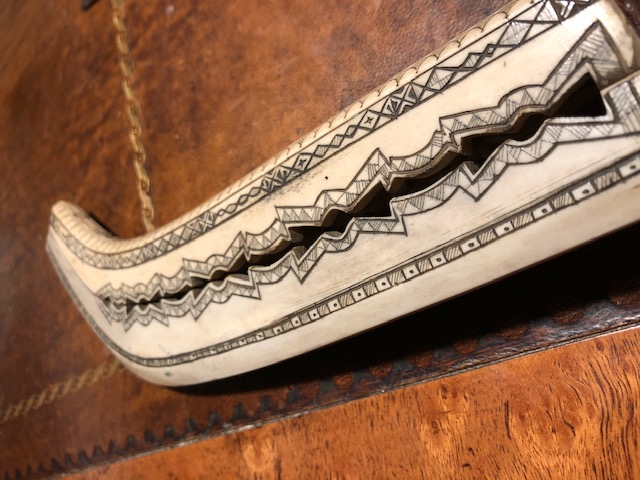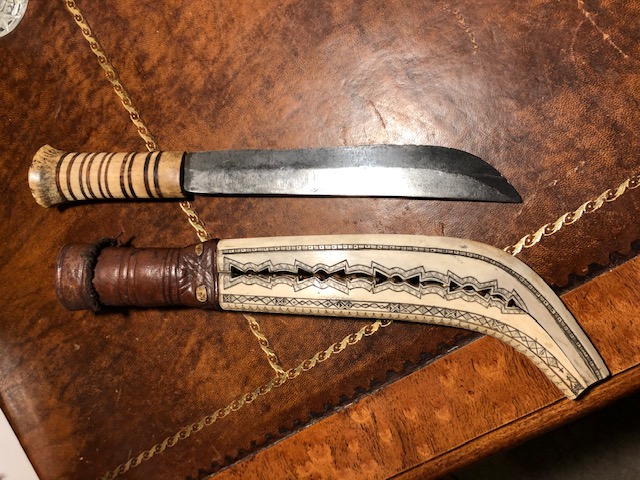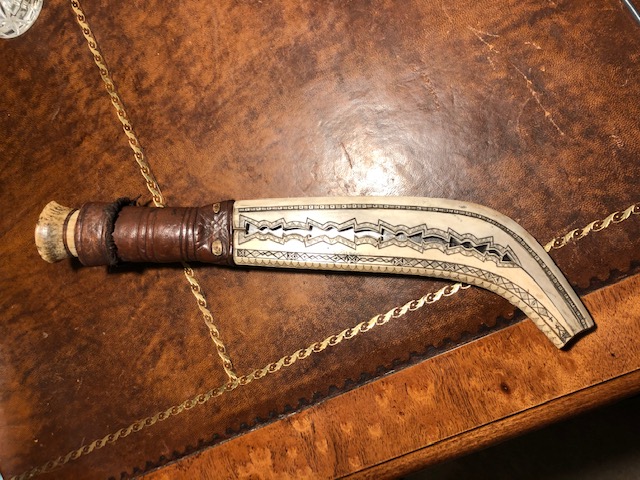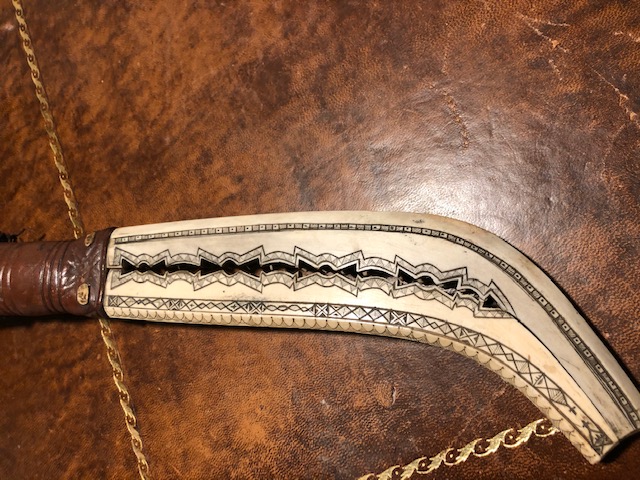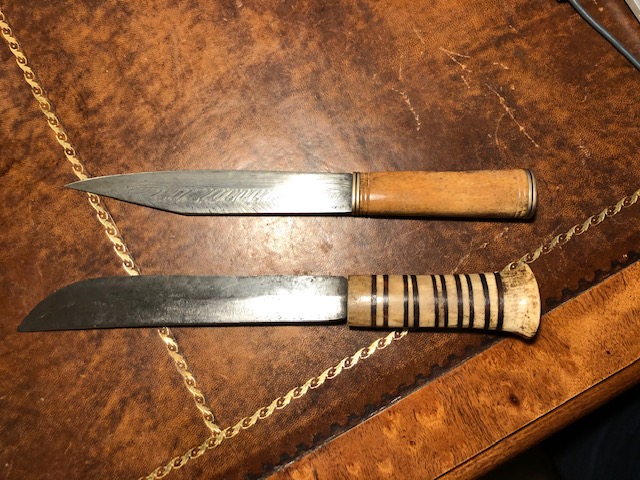I thought I would post this one which I got recently just because I really like it. And I think it would appeal to those who like Seaxs, as I do. It is a big Sami knife of traditional style, probably 19th century but could be early 20th century. Hard to tell with these.
I like it because I love scrimshaw work. I like it because of its similarity to Seaxs and general ultility/weapon knives.
Its a big knife but the original ones I have seen of this type have generally been bigger than the modern versions I have seen with short blades and bigger handles.
It's 13 inches in the scabbard. Out of the scabbard it's 12 inches, 8 inch blade, 4 inch handle. Handle I think is stag crown (reindeer probably ?) but with the edges filed down. Spaced with leather. Blade is as it appears, widening towards the point. Overall it feels like a lightish bowie knife.
What I love is the scabbard - made of two reindeer antler halves, cut into slabs and then hollowed to make the two halves of the scabbard. The halves are then glued and pegged (photo) with reindeer antler pegs through both sides.
I like these pieces because I can imagine the scrimshaw being done on dark Northern winter nights round a fire because there was nothing else to do but eat, tell stories, make things, carve things etc. So I can picture that, possibly the conceit of my imagination. But given my family were of Scandinavian origin and I grew up in the north of England I think I can identify with the dark, nothing to do winter concept quite well.
